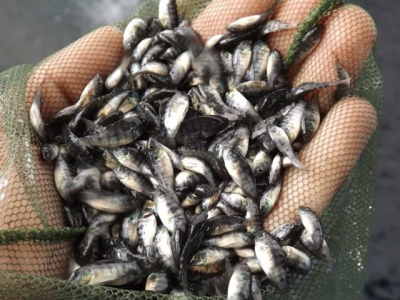A breakthrough for breeding Streptococcus-resistant tilapia

Benchmark has announced its discovery of a significant quantitative trait locus (QTL) for Streptococcus iniae resistance in Nile tilapia.
Benchmark’s Streptococcus-resistant fry will be available to producers during early 2020
Streptococcus infections are among the most critical disease challenges in tilapia production and Benchmark has hailed the breakthrough as "a significant opportunity for the industry to reduce streptococcus infections and the use of antibiotic treatments".
Benchmark’s genomic analysis from controlled disease resistance trials has shown that a significant proportion of the genetic variation for resistance is caused by a small region of DNA, known as the QTL. Benchmark has made a patent application in relation to its discovery and the QTL identified will be used to select broodstock with high levels of Streptococcus iniae resistance for the production of commercial fry. Currently Benchmark selects broodstock for improved resistance to Streptococcus agalactiae using genomic selection, and for resistance to Streptococcus iniae by marker-assisted selection using the S. iniae QTL.
This is the first time that a significant QTL for disease resistance in tilapia has been identified and used for commercial breeding
This is the first time that a significant QTL for disease resistance in tilapia has been identified and used for commercial breeding. It represents an important step forward in the genetic improvement of tilapia and in combating its most pressing disease challenges. Benchmark’s commercial Spring Tilapia fry will be available to producers during early 2020.
Malcolm Pye, CEO of Benchmark, commented: “This is a major step forward for the tilapia industry. We have seen first hand how devastating Streptococcus is to the industry and with the introduction of this new technology we can drive significant productivey and sustainability improvements for our customers.”
“In arriving at this breakthrough uur international teams of geneticists have transferred knowledge from our well-established breeding programmes in Atlantic salmon which has shown to be of great benefit to the tilapia industry.”
Morten Rye, director at Benchmark Genetics, commented: “This breakthrough in tilapia genetics is the result of many years of investment and commitment to bringing state-of-the-art breeding technology to this important farmed species. Today global tilapia production exceeds 6 million tonnes and we believe that this breakthrough will allow the industry to continue to grow to produce more of this cost effective, high-quality, protein source for humanity. Benchmark’s Spring Genetics team is excited to be heralding in a new era in tilapia breeding”.
Related news
 Grape pomace may support farmed fish facing disease challenge
Grape pomace may support farmed fish facing disease challenge Supplementing grass carp diets with grape pomace flour may support fish’s gill health and energetic metabolism function during a disease challenge, say research
 Butyrate shown to boost performance, immunity and resistance against possible infection
Butyrate shown to boost performance, immunity and resistance against possible infection Butyrate shown to boost performance, immunity and resistance against possible infection by pathogenic bacteria in tilapia
 The bacterium that's battling Streptococcus in tilapia
The bacterium that's battling Streptococcus in tilapia New research suggests that including Bacilllus subtilis in tilapia diets can reduce mortality rates of those fish facing a Streptococcus challenge.